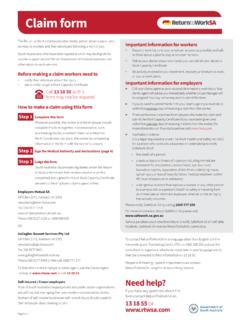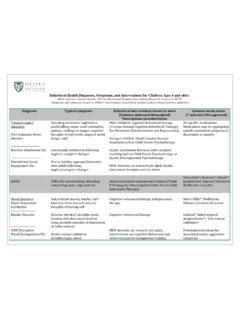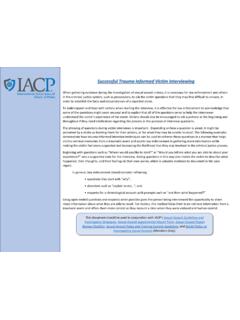Transcription of Impairment Assessment Guidelines - work injury insurance
1 Impairment Assessment GuidelinesRETURN TO WORK SCHEMEM arch 2015 Assessment GuidelinesIMPAIRMENT Assessment GUIDELINESR eturn to Work schemeContents Foreword 2 1 Introduction 3 2 Upper extremity 15 3 Lower extremity 23 4 Spine 39 5 Nervous system 47 6 Ear, nose, throat and related structures 51 7 Urinary and reproductive systems 57 8 Respiratory system 63 9 Hearing 65 10 Visual system 79 11 Haematopoietic system 81 12 Endocrine system 83 13 Skin 85 14 Cardiovascular system 93 15 Digestive system 95 16 Psychiatric disorders 97 17 Assessor selection process 113 Note Evaluation of permanent Impairment arising from chronic pain 115 Appendix 1 Notes for the requestor 117 Appendix 2 Explanatory notes 123 Appendix 3 Glossary 124 Appendix 4 Development of the Guidelines 125 Appendix 5 GEPIC worksheet 1272 Impairment Assessment
2 Guidelines The Impairment Assessment Guidelines (the Guidelines ) are published under subsection 22(3) of the Return to Work Act 2014 (the Act) for the purpose of assessing the degree of whole person Impairment arising from a work injury that results in permanent Impairment . The Guidelines are intended to provide an objective, fair and consistent method for assessing permanent Impairment arising from a work injury . The Act requires that permanent Impairment assessments are made in accordance with these Guidelines . Only medical practitioners who are trained in the use of the Guidelines and are accredited by the Minister to assess the degree of whole person Impairment arising from a work injury can undertake permanent Impairment assessments.
3 The Guidelines are based mainly on the American Medical Association Guides to the evaluation of permanent Impairment , 5th edition (AMA5). AMA5 is the most authoritative and widely used source for the purpose of evaluating permanent Impairment . However, extensive work by eminent medical specialists, representing medical colleges, has gone into reviewing AMA5 to ensure alignment with Australian clinical practice. Section 22 of the Act and the Guidelines apply to the Assessment of whole person Impairment when a worker s entitlement to lump sum compensation is to be determined, from and after 1 July 2015. Explanatory notes can be found in the back of the Introduction1 INTRODUCTIONThis page has been intentionally left Assessment The Impairment Assessment Guidelines (the Guidelines ) are published under subsection 22(3) of the Return to Work Act 2014 (the Act).
4 The Guidelines are based mainly on the American Medical Association Guides to the evaluation of permanent Impairment , 5th edition (AMA5). The chapter on Psychiatric Disorders is based on the Guide to the Evaluation of Psychiatric Impairment by Clinicians (GEPIC). The Guidelines adopt AMA5 in most cases. Where there is any deviation, the difference is defined in the Guidelines . Where differences exist, the Guidelines are to be used as the modifying document. The procedures contained in the Guidelines are to prevail if there is any inconsistency with, or difference from, The Guidelines are to be used when there is a need to establish the degree of whole person Impairment that results from a work injury .
5 The Assessment of whole person Impairment is conducted for the purpose of assessing permanent Impairment in a consistent and medically objective manner. Before undertaking an Assessment of whole person Impairment , users of the Guidelines must be familiar with the introductory section of the Guidelines and chapters 1 and 2 of AMA5 regarding the purpose of, applications and methods for performing and reporting Impairment The Guidelines apply to all whole person Impairment assessments conducted on or after 1 July 2015 unless the Assessment relates to a notice of dispute lodged before 1 July 2015. Evaluating permanent Impairment involves clinical Assessment on the day of Assessment , determining: whether the worker s work injury has resulted in Impairment whether the resultant Impairment is permanent whether the work injury has reached maximum medical improvement (MMI) the degree of permanent Impairment that results from the work injury (ies), the degree of whole person Impairment , and if relevant, the proportion of permanent Impairment resulting from any previous injury (work-related or otherwise) to the same part of the body or region.
6 The Assessment of whole person Impairment should be in accordance with diagnostic and other objective criteria as detailed in the INTRODUCTION4 Impairment Assessment The Guidelines are designed to support assessors who are accredited by the Minister to assess whole person Impairment . By the time a whole person Impairment Assessment is required, the question of liability for the work injury (ies) would normally have been determined. The person who makes the request for an Assessment of whole person Impairment (the requestor) is to confirm the work injury for which compensability has either been accepted or is in dispute. If an assessor identifies an Impairment caused by a medical condition not identified in the request, the assessor is to describe the causal connection, if any, between the work injury for which liability is accepted or disputed and the newly identified Impairment .
7 As such, this newly identified Impairment is not to be rated on this occasion. In the case of a complex work injury , where different accredited assessors are required to assess different body systems, the relevant compensating authority will appoint a Lead Assessor. This will usually be the assessor assessing the worker s primary or main injury . The Lead Assessor will provide a report that summarises the other assessments and calculate the final percentage of whole person Impairment (% WPI) resulting from the individual permanent Impairment The relevant compensating authority is responsible for assessing the compliance of the reports submitted to the Lead Assessor with the systems covered by the The Guidelines refer to the assessable body systems.
8 The Pain chapter in AMA5 (chapter 18) is excluded. The Mental and Behavioural Disorders chapter (chapter 14) is excluded and replaced by chapter 16 of the Guidelines , which incorporates the Guide to the Evaluation of Psychiatric Impairment for Clinicians (GEPIC). The visual system Assessment adopts the relevant chapter from AMA4, not AMA5. Evaluation of whole person Impairment due to hearing loss adopts the methodology indicated in the Guidelines (chapter 9) with some reference to chapter 11, AMA5 (pp245 251), but uses National Acoustic Laboratory (NAL) tables from the NAL Report No 118, Improved procedure for determining percentage loss of hearing, January As the Pain chapter in AMA5 (chapter 18) is excluded, no separate Assessment can or should be made for pain except in the specific circumstances described for diagnosed Complex Regional Pain Syndrome and in the Assessment of peripheral nerve injuries as described in the upper and lower extremity chapters of the Guidelines .
9 Impairments that may be accompanied by pain are assessable as described in chapters 3 17, AMA5, as modified by the Guidelines in the upper and lower extremities Assessment GuidelinesLegislative The Act outlines specific requirements when assessing whole person Impairment , as identified in the Guidelines . The requestor has the responsibility to provide clear guidance to the assessor to meet those Impairment maximum medical Assessments are only to be conducted when the injury has stabilised and the assessor considers that the degree of whole person Impairment of the worker is fully ascertainable. Whole person Impairment is fully ascertainable where the assessor believes the worker has attained maximum medical improvement (MMI).
10 MMI is when the worker s condition has been medically stable for the previous three months and is unlikely to change in the foreseeable future, with or without further medical treatment. With MMI, further recovery or deterioration is not anticipated, but can include temporary fluctuations. The exception is neurological damage ( peripheral nerve injury ), which should not be assessed until symptoms have persisted for 12 months. If the assessor thinks that MMI has not been achieved, the Assessment must be deferred and an explanation provided as to The Act requires psychiatric injuries to be assessed separately from physical injuries (refer to subsection 22(8)(d) of the Act). This means they are not combined to determine one whole person Impairment Assessment (% WPI).





